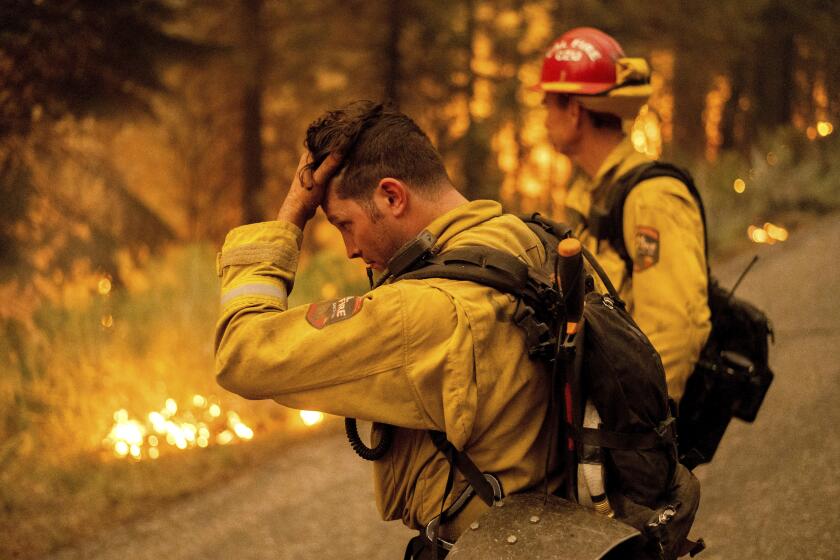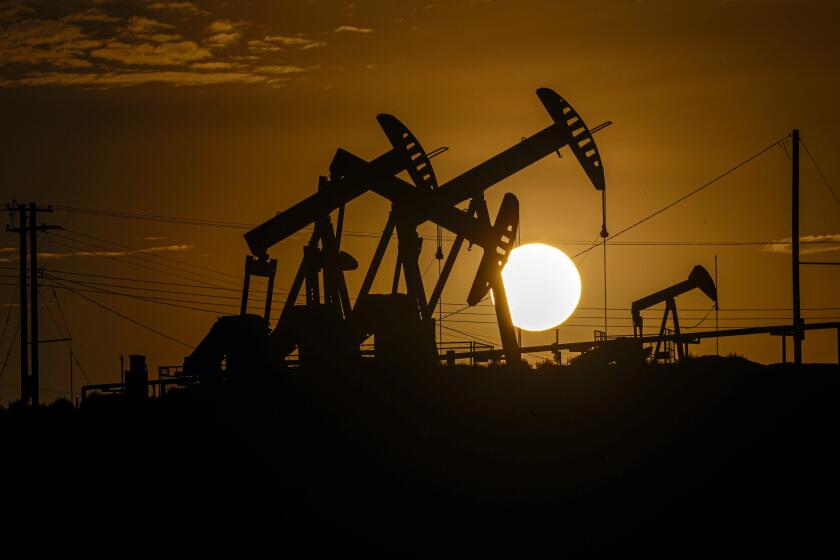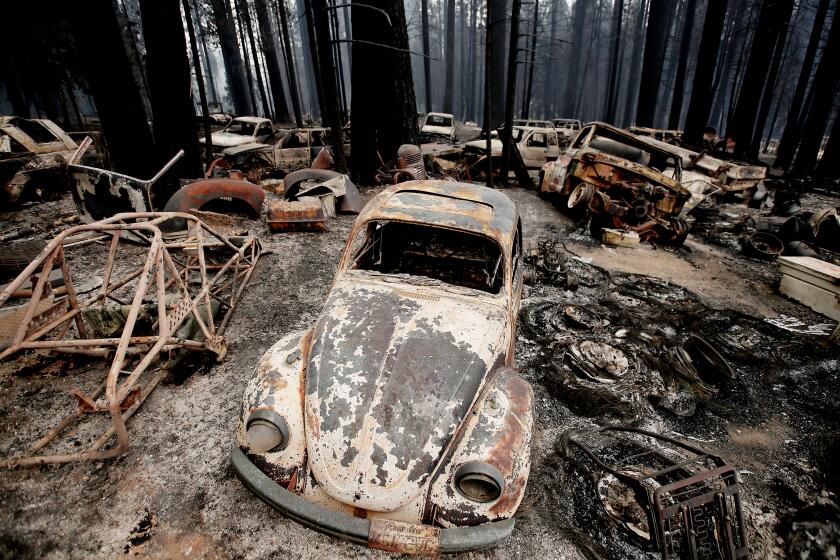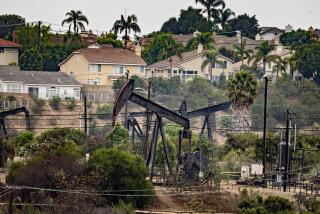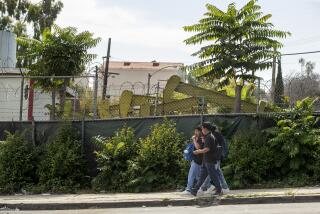Editorial: Oil drilling near homes is dangerous and unhealthy. California should end the practice
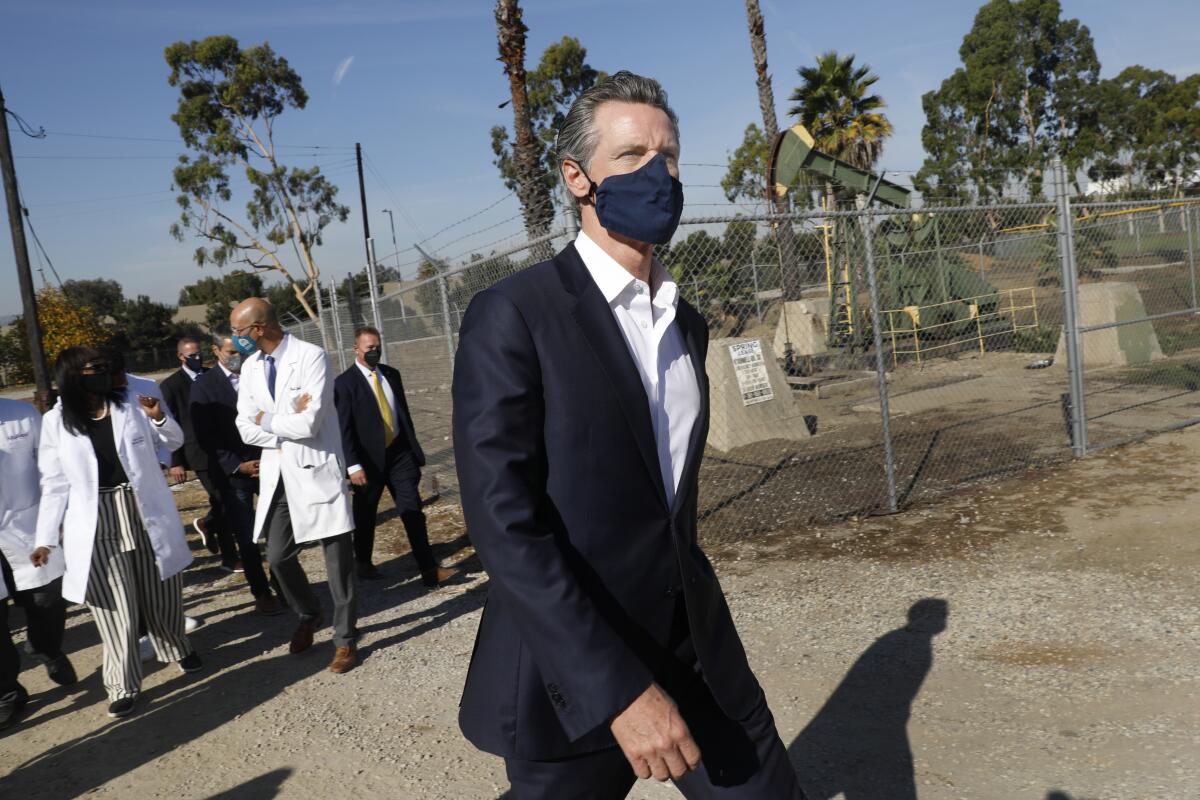
- Share via
Despite its reputation as a global climate leader with tough environmental standards, California has lagged when it comes to protecting its own people from the impacts of oil drilling. The state has allowed companies to extract oil essentially wherever they please — near homes and schools, child care centers and hospitals — exposing millions in mostly low-income communities of color to health-damaging pollution and noise.
But last fall, Gov. Gavin Newsom announced his administration would move forward with a ban on new oil and gas wells within 3,200 feet of homes, schools and healthcare facilities, joining other states like Colorado that already require health-protective buffers between drilling and homes and schools.
The rule, while a big step forward for a state that has for too long dismissed pleas from frontline communities to curtail neighborhood drilling, does too little to address existing operations and must be strengthened if it is to make a meaningful difference in people’s lives.
Newsom’s one-time budget-surplus funding plan for climate change is a good thing. But it’s no substitute for real climate action by state lawmakers.
Living near oil and gas wells is linked to an array of health problems including asthma, preterm births and reductions in lung function similar to living near busy roadways or with secondhand smoke. Hit hardest are Latino and Black Californians, who are more likely to live near drilling operations and be exposed to oil- and gas-related air pollution.
Newsom’s setback proposal should be praised for its expansive distance, which is based on the recommendations of an independent panel of public health experts that found consistent evidence of harm at distances less than 1 kilometer, which is 3,281 feet. It exceeds even the 2,500-foot buffer sought by environmental justice groups. As much as 30% of state oil and gas production occurs within the 3,200-foot setback, according to the state Department of Conservation Geologic Energy Management Division.
The plan’s major shortcoming is that it would only prohibit new drilling, meaning existing oil wells and other production facilities will be able to continue operating near homes and schools. Though the proposal would require new pollution controls on existing operations, those measures would not do enough to address serious and ongoing risks to people’s health and the environment.
That exemption is also at odds with the recommendations of the scientific advisory panel that the 3,200-foot buffer should apply to both new and existing operations. The panel found that the most health-protective strategy would be “to stop drilling and developing new wells, phase out existing [oil and gas development] activities and associated infrastructure, and properly plug remediate legacy wells and ancillary infrastructure.”
California oil and gas regulators have begun denying permits for hydraulic fracturing citing the damage to the climate. Let’s hope this is what the oil industry fears: The beginning of the end for fossil fuel extraction.
Before releasing final rules later this year, regulators should heed the advice of scientific advisors and require a phaseout of existing oil and gas operations within the 3,200-foot buffer. The human body can’t distinguish whether the pollutants triggering asthma attacks, headaches and nosebleeds came from a newly drilled well or one that’s been around for years.
Leaving existing wells in place blunts the power of these rules, leaving communities in the shadow of drilling sites with no clear timeline for when they can expect actual improvements to their health and quality of life.
It’s unfortunate that Newsom has to move forward with these urgently needed protections without any help from the Legislature. Bills that would have established such setbacks failed to pass because of opposition from the oil industry and organized labor, whose money and influence flow freely through Sacramento.
Of course, more people are worried about climate change given the escalating wildfires, heat waves and other climate disasters. But you wouldn’t know it from our government’s flagging response.
State officials argue that banning all oil and gas operations in the buffer zones would expose them to legal challenges over property rights, but they are already being fought by the state’s billion-dollar oil industry and the regulation will likely to be contested in court anyway. Regulators, who are also working on a ban on fracking, say that curtailing oil and gas production too quickly would be overly disruptive to an economy that still is overwhelmingly powered by fossil fuels and still relies on in-state production for about one-third of its oil supply. But Newsom has already set a goal of phasing out all oil production in the state by 2045, which is necessary to avert much greater disruption from climate change. It makes sense to end drilling sooner in communities that have suffered most from fossil fuel extraction.
State regulators should look to local governments for inspiration, including Culver City and Los Angeles County, which have already taken more aggressive steps to phase out all drilling, not just near homes and schools.
Hard-hit communities from Wilmington and Baldwin Hills to Kern County have suffered too long and cannot wait years or decades more for cleaner air and safer neighborhoods. California should be a climate leader in its own backyard.
More to Read
A cure for the common opinion
Get thought-provoking perspectives with our weekly newsletter.
You may occasionally receive promotional content from the Los Angeles Times.
